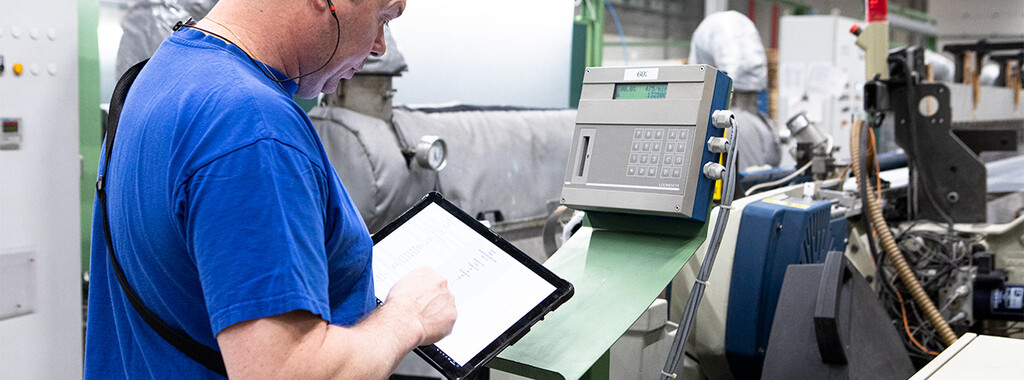Veranneman significantly reduces paper use

Paperless company Veranneman Technical Textiles
Veranneman Technical Textiles, part of the Sioen Group, used to print and use 53 135 documents a year for monitoring its weaving production site. One of the weavers started to search for a more ecological alternative and this project became a true digital project. Now, tablets are used to add the data to the system instead of paper forms.
The old paper-based system
Veranneman’s production system used to have quite a paper trail. At each of the weaving looms, there used to be four files: one with the product specifications, one with the order specifications, one for monitoring the weaving process and finally, a form that is used for the follow-up of quality measurements. Some of those papers were then transported to other departments or archived.
With almost 100 weaving looms at Veranneman’s production site, this meant that a lot of paper was used. Those four documents were used for each and every one of those looms and for each roll of fabric that was produced. In total, 53 135 documents a year were printed and used, just for monitoring the weaving looms. Next to the obvious ecological disadvantages of using that much paper, the written forms were sometimes hard to read and there wasn’t any feedback on whether a certain value is filled in correctly.
Veranneman’s paperless solution
This project towards digitalisation started with a weaver who suggested digitalising the monitoring forms. Thanks to the adaptation, the process would become more ecological and easier. The paper use is reduced and the data are now directly entered in the right system and all production stages are linked. The system also provides an additional quality guarantee, as it, for example, indicates when the completed weight values can’t be correct.
The digital platform is very user-friendly and we might say that it is easier to work with than the former written forms.
A back-up plan
A paper form remains available at each of the weaving looms. The weavers requested this, as it is hard to rely on the digital platform 24/7. We can’t expect the weavers to have their tablets close every second of the day and in case the network fails to work or whenever a tablet runs out of power or is damaged, we want to have a back-up plan.
Finally, we are pleased to say that Veranneman has become a more eco-friendly and fully digital enterprise.

